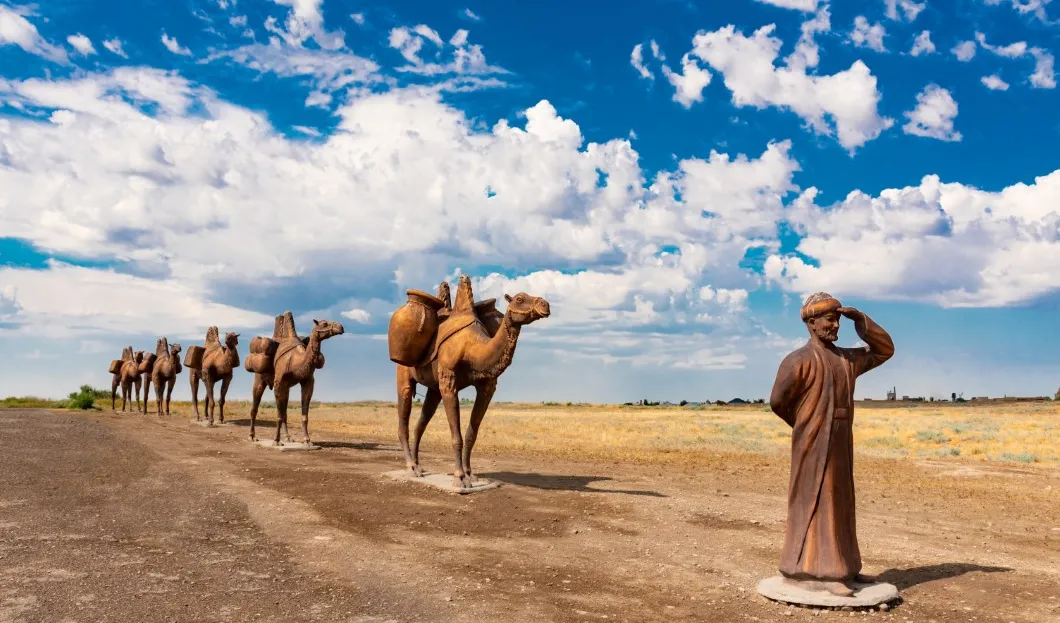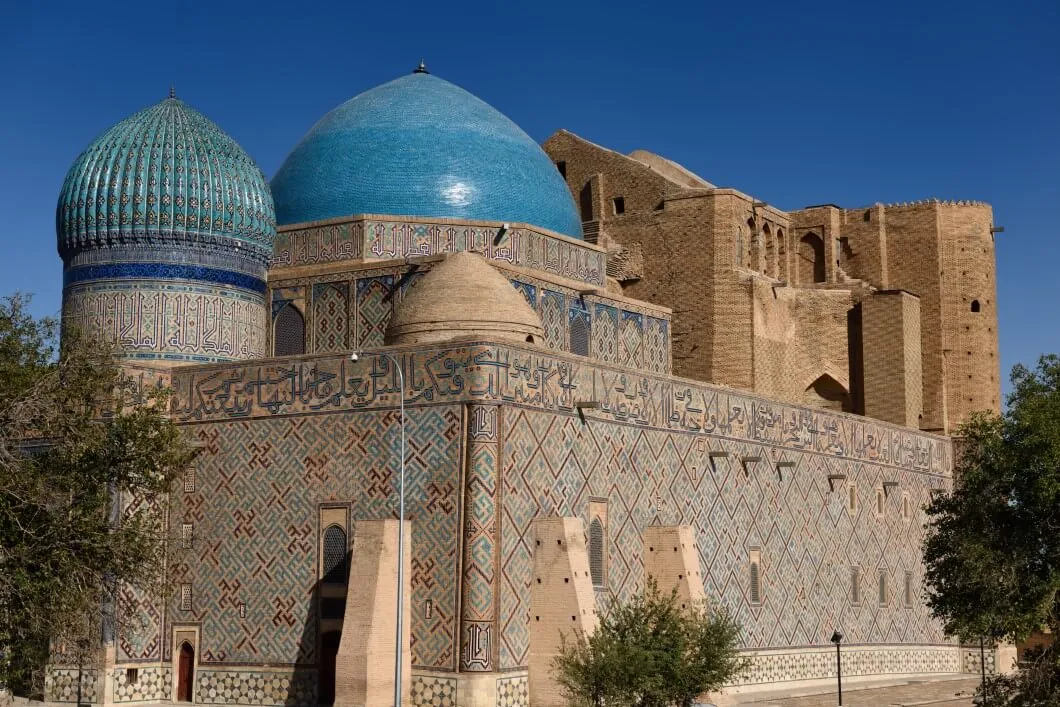
Turkestan city in Kazakhstan is home to a number of historical places which mesmerize visitors with their stunning decor, colorful and beautiful pattern tiles showing the art and culture of Turkestan from ages ago. No wonder, many call it the most historic city of Kazakhstan.
The history of the city is full of inspiring personalities including Baidibek who is one of the local heroes. He was famous for his struggles for the betterment and protection of Kazakh people when he united them and struggled hard to protect them from their enemies. The tomb of Baidibek also lies near the tomb of Domalak-Ana, which is also a very popular site among the tourists.
The Domalak-Ana Mazar, a tomb built near the city, has its own unique charm which attracts many tourists every year. The tomb was built in the early 20th century in honor of the “Great Mother Babisher, daughter of Aksultan”. According to old beliefs, three tribes (Kazakh Zhuses) were the descendants of Domalak-Ana by her three grandsons Alban, Dulat, and Susan.
The world-renown Mausoleum of Ahmed Yasavi is a mausoleum of the great saint named “Khoja Ahmed Yasevi” who preached, died and was buried here. The present monument was built in the 14th century ordered by the then ruler Timur to pay tribute to great saints for their contributions. The mausoleum is one of the most famous and main attractions in the country. Visitors come to admire the jaw-dropping architecture and outstanding design of this mighty building.

Besides the mausoleum, there are a lot of places in the Turkestan to visit. One of the most beautiful places, for instance, is the city of Sauran. It is famous for its loneliness since the whole city is covered with grass and visitors feel like being completely alone in an abandoned city. The city was abandoned for no reason a long time ago. Exploring the place visitors can feel the sadness and imagine its story.
The history of Sauran is quite interesting as the metropolis was famous for its defensive walls as well as business. Silk, brocade, cotton fabric, high-quality porcelain, saffron, dried fruits, Dutch ware, and ceramics – all the merchandise could be obtained here.
Boralday is another must-visit place for any tourist. It was discovered in 1904 by R.I. Komarov. The place is famous for the rock carvings of goats, deer, horses, hunting scenes, and mouflons. The rock carving art represents the cultures of Central Asia, Southern Siberia, and Kazakhstan which were of the same level of spiritual development, economic setup, and notions of the steppe tribes.
The Akmeshit cave which is situated 100 km off Shymkent in the Baidibek region is also a popular attraction. The cave was formed of limestone rocks. Usually, the temperature here differs from the surrounding areas and ranges from 9 to 15°C. It does not change much throughout the whole year. The most astonishing feature of the cave is a bunch of trees in a grove right in the cave. Many folk tales are connected with the cave; one of them is that the cave was used as a shelter by children and women during the Jungar invasion, another story is that that it was the house of a dragon. Yet, another legend tells that a large underground mosque used to be in the cave.
Mashat Gorge is famous for caves and grottos, the so-called Crying caves. They are situated 43 km off the city of Shymkent, in Tulbas. The most famous one is the Wailing cave where the water drips down the walls making it even more attractive.
Located 60 km off Turkestan in the lower reaches of the Arys River, visitors find Otrar. It is the largest site within the Otrar oasis, also known as Tarband, Turarband, Turar, or Farab. During the Middle Ages the city was populated by scholars, wise men, skillful musicians, prophets, and jewelers. It was the home town of Abu Nasr al-Farabi (870-950), one of the greatest oriental philosophers. The city featured a big madrasah, bazaar, smith shop, gurt-khana (a place to drink wines made in the oasis), bathhouse, mosques, shops, and stores.
Being situated at the intersection of the ancient caravan routes, Otrar became known for its coveted location. At the time, it was one of the richest and most progressive cities within the Central Asian stretch of the Silk Road.
The Turkestan city is proud to its cultural and historic heritage and it's expected to welcome up to 5 million tourists annually by 2025.










